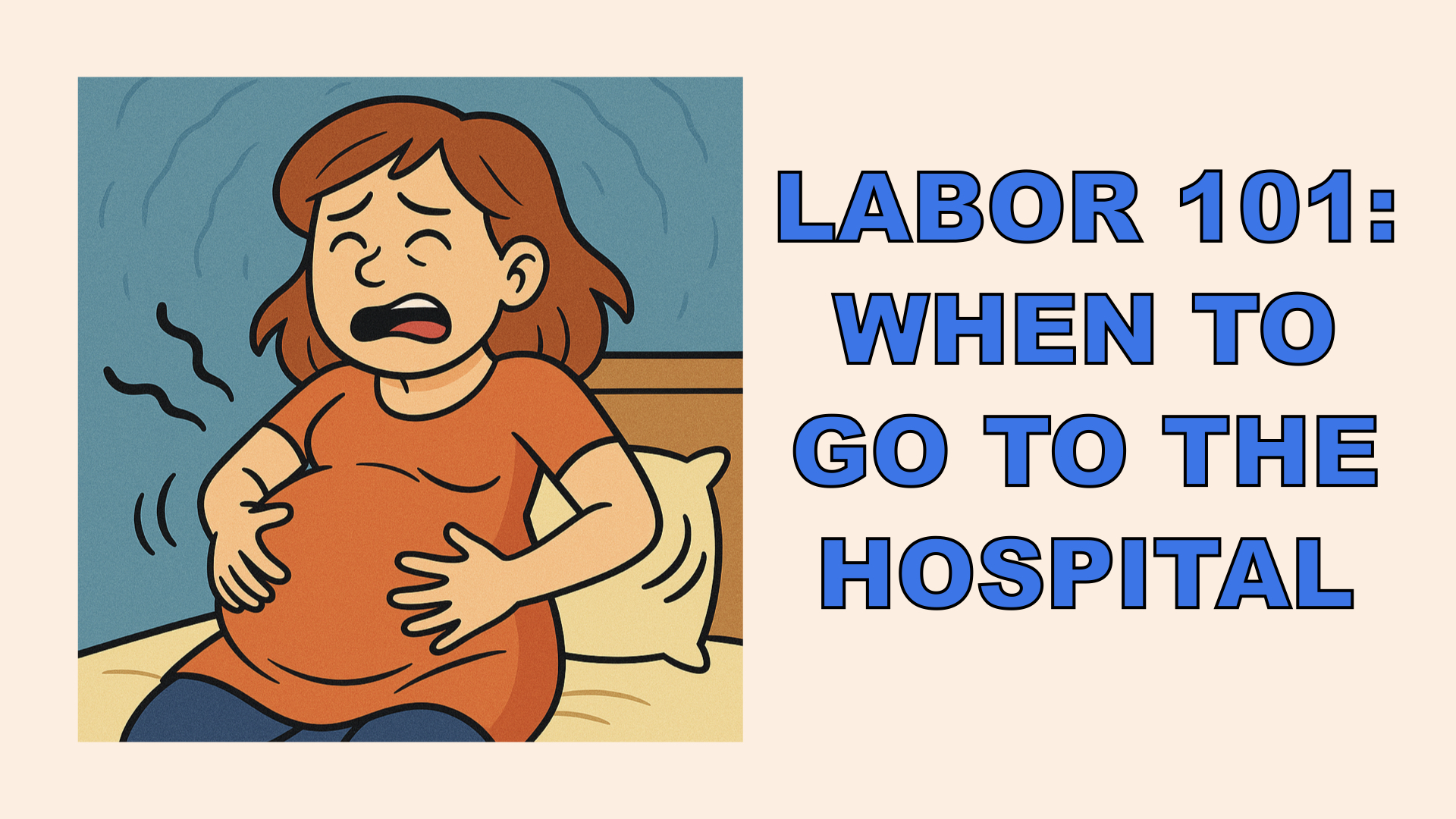When my partner and I took a labor and delivery class, we learned how important it is to understand the process—not just for peace of mind, but to recognize when it’s time to go to the hospital.
We learned that there are three stages of labor and birth. And within the first stage, there are basically 3 parts of labor: early, active, and transition.
Our teacher helped us know when was normal to go into the hospital when having a baby and that’s what I wanted to talk about here.
Disclaimer: We are not medical professionals. The content in this post is based on personal experience from a labor and delivery class and is intended for informational purposes only. It should not be considered medical advice, diagnosis, or treatment. Always consult your healthcare provider for guidance specific to your situation.
Stage 1: Early Labor (0-6 cm Dilated)
What to Expect:
- Contractions begin, often regular and mild
- You might feel a dull backache or menstrual-like cramps
- You may notice light spotting or lose your mucus plug
- You can usually walk and talk through the contractions
This stage can last many hours (6-12 hours or more), especially for first-time parents. It’s usually okay to stay at home and rest during this phase. Our teacher emphasized resting in this phase.
Hydration, light snacks, and relaxation techniques can be helpful.
This is usually the time to call your provider let them know your regular contractions have started.
(Additional Read: How to Bathe Your Newborn)
Stage 2: Active Labor (6-8 cm Dilated) – Most Common Time to Go to the Hospital
What to Expect:
- Contractions grow stronger, longer, and closer together
- It becomes difficult to walk or talk during a contraction
- Increased pressure in your lower back or pelvis
- Possible nausea or emotional shifts (excitement, anxiety)
This stage lasts about 3-5 hours and is often when you’re admitted to the hospital or birthing center. Your care team may monitor your dilation and vitals more closely during this time.
When to Go to the Hospital: Watch for the 5-1-1 rule: contractions that are 5 minutes apart, lasting 1 minute each, and have been consistent for 1 hour.
Note: You time contractions from start of one contraction to the start of the next. There are several useful contraction timing apps. Our teacher highly recommended we use one them to make things easy once we make it close to the 5-1-1 rule.
Stage 3: Transition (8-10 cm Dilated)
What to Expect:
- Very intense contractions, often just 2–3 minutes apart
- Shaking, chills, or hot flashes
- Strong rectal pressure or the urge to push
- Exhaustion, irritability, or fear that you “can’t do this” (this is common and temporary)
This is the shortest but most intense phase of delivery. It’s also the final stretch before the pushing stage begins. You should already be at the hospital (if giving birth there) during this phase.
You Got This! Final Tip from Our Labor Class Teacher
“Labor is a natural moment in life. You are built to endure labor”
Our teacher reminded everyone in the class how natural labor is and to encourage everyone that they can do this.
Labor and delivery look different for every person, but learning what’s typical can help you recognize what’s happening in your body. The early, active, and transition stages of delivery follow a natural rhythm, and tools like the 5-1-1 rule can help you decide when it’s time to seek care.
